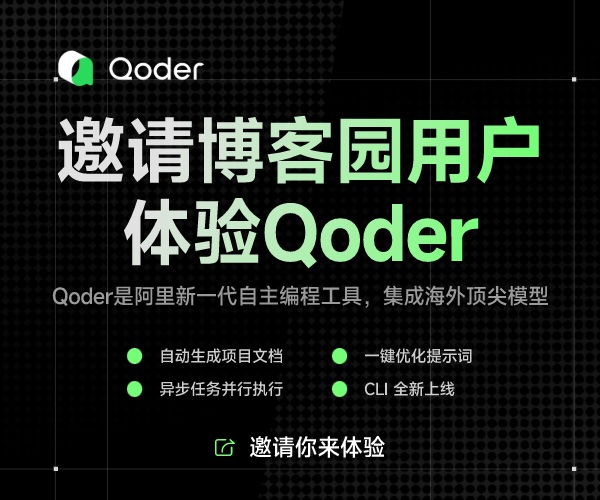重命名節點、合并內存中的兩個文檔或者將一個文檔中的部分內容加入到另一個文檔中
1 // Renaming nodes
// Renaming nodes
2 Element element = document.createElementNS("http://example.com", "street");
Element element = document.createElementNS("http://example.com", "street");
3 // if implementation can rename the node, element returned
// if implementation can rename the node, element returned
4 // is the same object as was originally created
// is the same object as was originally created
5 element = document.renameNode(element, "http://example.com", "address");
element = document.renameNode(element, "http://example.com", "address");
6 // adopting previously created node to a different document
// adopting previously created node to a different document
7 Node adoptedNode = document2.adoptNode(element);
Node adoptedNode = document2.adoptNode(element);
8
 // Renaming nodes
// Renaming nodes2
 Element element = document.createElementNS("http://example.com", "street");
Element element = document.createElementNS("http://example.com", "street");3
 // if implementation can rename the node, element returned
// if implementation can rename the node, element returned4
 // is the same object as was originally created
// is the same object as was originally created5
 element = document.renameNode(element, "http://example.com", "address");
element = document.renameNode(element, "http://example.com", "address");6
 // adopting previously created node to a different document
// adopting previously created node to a different document7
 Node adoptedNode = document2.adoptNode(element);
Node adoptedNode = document2.adoptNode(element);8

比較節點——測試兩個節點是否相等、是否相同以及它們在文檔資料樹中的相對位置
兩個對象要相同,它們必須在內存中是 同一個對象。另一方面,兩個對象要相等,它們只需具有相同的特性即可。因此,兩個相同的對象必定是相等的,但是兩個相等的對象不一定是相同的。
isEqualNode // 判等
isSameNode // 判同
compareDocumentPosition // 一個節點是另一個節點的后代還是祖先、在前面還是后面等等
處理文本——檢索和設置一個
Element 1 String oldContent = elem.getTextContent();
String oldContent = elem.getTextContent();
2 elem.setTextContent("content");
elem.setTextContent("content");
3
Text  String oldContent = elem.getTextContent();
String oldContent = elem.getTextContent();2
 elem.setTextContent("content");
elem.setTextContent("content");3

wholeText 它返回在邏輯相鄰的文本節點中所包含的所有文本使用數據
當附加了一些數據的節點上有事件發生時,已注冊的處理程序將被調用,并提供所有必需的信息來相應地更新結構
Part2:對文檔的操作、訪問類型信息和Xerces中的實現方式
映射到 Infoset——新的 Appendix C 提供了 XML Infoset 模型與 DOM 之間的映射
1 // XML Declaration information on
// XML Declaration information on
2 // the org.w3c.dom.Document interface
// the org.w3c.dom.Document interface
3 public String getXmlEncoding(); //獲取變法方式
public String getXmlEncoding(); //獲取變法方式
4 public void setXmlEncoding(String xmlEncoding); // 設置編碼方式
public void setXmlEncoding(String xmlEncoding); // 設置編碼方式
5 public boolean getXmlStandalone();
public boolean getXmlStandalone();
6 public void setXmlStandalone(boolean xmlStandalone)
public void setXmlStandalone(boolean xmlStandalone)
7 throws DOMException;
throws DOMException;
8 public String getXmlVersion(); // xml版本
public String getXmlVersion(); // xml版本
9 public void setXmlVersion(String xmlVersion)
public void setXmlVersion(String xmlVersion)
10 throws DOMException;
throws DOMException;
11 // element content whitespace property on the Text
// element content whitespace property on the Text
12 // interface
// interface
13 public boolean isWhitespaceInElementContent(); // 一個
public boolean isWhitespaceInElementContent(); // 一個
14
通過  // XML Declaration information on
// XML Declaration information on2
 // the org.w3c.dom.Document interface
// the org.w3c.dom.Document interface3
 public String getXmlEncoding(); //獲取變法方式
public String getXmlEncoding(); //獲取變法方式4
 public void setXmlEncoding(String xmlEncoding); // 設置編碼方式
public void setXmlEncoding(String xmlEncoding); // 設置編碼方式5
 public boolean getXmlStandalone();
public boolean getXmlStandalone();6
 public void setXmlStandalone(boolean xmlStandalone)
public void setXmlStandalone(boolean xmlStandalone)7
 throws DOMException;
throws DOMException;8
 public String getXmlVersion(); // xml版本
public String getXmlVersion(); // xml版本9
 public void setXmlVersion(String xmlVersion)
public void setXmlVersion(String xmlVersion)10
 throws DOMException;
throws DOMException;11
 // element content whitespace property on the Text
// element content whitespace property on the Text 12
 // interface
// interface13
 public boolean isWhitespaceInElementContent(); // 一個
public boolean isWhitespaceInElementContent(); // 一個 Text 14

Attr schemaTypeInfo 在這種映射中,XML Infoset 信息項都映射到其相應的
Node ,反之也一樣,一個信息項的每一個屬性都映射到其相應 Node 自舉——DOMImplementationRegistry 對象,通過使用機制機制,就可以使用對于應用程序最合適的實現
1 // set DOMImplementationRegistry.PROPERTY property
// set DOMImplementationRegistry.PROPERTY property
2 // to reference all known DOM implementations
// to reference all known DOM implementations
3 System.setProperty(DOMImplementationRegistry.PROPERTY,
System.setProperty(DOMImplementationRegistry.PROPERTY,
4 "org.apache.xerces.dom.DOMImplementationSourceImpl");
"org.apache.xerces.dom.DOMImplementationSourceImpl");
5 // get an instance of DOMImplementationRegistry
// get an instance of DOMImplementationRegistry
6 DOMImplementationRegistry registry = DOMImplementationRegistry.newInstance();
DOMImplementationRegistry registry = DOMImplementationRegistry.newInstance();
7 // DOM implementation that support the specified features
// DOM implementation that support the specified features
8 DOMImplementation i = registry.getDOMImplementation("MutationEvent");
DOMImplementation i = registry.getDOMImplementation("MutationEvent");
9
 // set DOMImplementationRegistry.PROPERTY property
// set DOMImplementationRegistry.PROPERTY property 2
 // to reference all known DOM implementations
// to reference all known DOM implementations3
 System.setProperty(DOMImplementationRegistry.PROPERTY,
System.setProperty(DOMImplementationRegistry.PROPERTY,4
 "org.apache.xerces.dom.DOMImplementationSourceImpl");
"org.apache.xerces.dom.DOMImplementationSourceImpl");5
 // get an instance of DOMImplementationRegistry
// get an instance of DOMImplementationRegistry6
 DOMImplementationRegistry registry = DOMImplementationRegistry.newInstance();
DOMImplementationRegistry registry = DOMImplementationRegistry.newInstance();7
 // DOM implementation that support the specified features
// DOM implementation that support the specified features8
 DOMImplementation i = registry.getDOMImplementation("MutationEvent");
DOMImplementation i = registry.getDOMImplementation("MutationEvent");9

文檔標準化——Document
normalizeDocument 通過
DOMConfiguration 配置 normalizeDocument ,以便對文檔執行其他操作 1 // retrieve document configuration
// retrieve document configuration
2 DOMConfiguration config = document.getConfig();
DOMConfiguration config = document.getConfig();
3 // remove comments from
// remove comments from
4 config.setParameter("comments", false);
config.setParameter("comments", false);
5 // remove namespace declarations
// remove namespace declarations
6 config.setParameter("namespace-declarations", false);
config.setParameter("namespace-declarations", false);
7 // transform document
// transform document
8 core.normalizeDocument();
core.normalizeDocument();
9 // put document into a form closest to the XML Infoset
// put document into a form closest to the XML Infoset
10 config.setParameter("infoset", true);
config.setParameter("infoset", true);
11 // transform document
// transform document
12 core.normalizeDocument();
core.normalizeDocument();
13
normalizeDocument  // retrieve document configuration
// retrieve document configuration2
 DOMConfiguration config = document.getConfig();
DOMConfiguration config = document.getConfig();3
 // remove comments from
// remove comments from4
 config.setParameter("comments", false);
config.setParameter("comments", false);5
 // remove namespace declarations
// remove namespace declarations6
 config.setParameter("namespace-declarations", false);
config.setParameter("namespace-declarations", false);7
 // transform document
// transform document8
 core.normalizeDocument();
core.normalizeDocument();9
 // put document into a form closest to the XML Infoset
// put document into a form closest to the XML Infoset 10
 config.setParameter("infoset", true);
config.setParameter("infoset", true);11
 // transform document
// transform document12
 core.normalizeDocument();
core.normalizeDocument();13

為此,首先需要將
DOMConfiguration validate true 。然后需要實現一個 DOMErrorHandler error-handler Document normalizeDocument 訪問類型信息——名為
TypeInfo 如果使用 DTD (在裝載的時候,或者使用
normalizeDocument ),那么一個屬性節點的 TypeInfo TypeInfo 的名稱為 null ,命名空間 URI 為 null ,這是因為 DTD 沒有定義元素類型。 如果使用 XML Schema 驗證文檔,那么
TypeInfo 在 Xerces2 中使用 DOM Level 3 API
1 // Retrieve configuration
// Retrieve configuration
2 DOMConfiguration config = document.getConfig();
DOMConfiguration config = document.getConfig();
3 // Set document base URI
// Set document base URI
4 document.setDocumentURI("file:///c:/data");
document.setDocumentURI("file:///c:/data");
5 // Configure the normalizeDocument operation
// Configure the normalizeDocument operation
6 config.setParameter("schema-type", "http://www.w3.org/2001/XMLSchema");
config.setParameter("schema-type", "http://www.w3.org/2001/XMLSchema");
7 config.setParameter("validate", true);
config.setParameter("validate", true);
8 config.setParameter("schema-location", "personal.xsd");
config.setParameter("schema-location", "personal.xsd");
9 // Revalidate your document in memory
// Revalidate your document in memory
10 document.normalizeDocument();
document.normalizeDocument();
11
驗證內存中的文檔 // Retrieve configuration
// Retrieve configuration2
 DOMConfiguration config = document.getConfig();
DOMConfiguration config = document.getConfig();3
 // Set document base URI
// Set document base URI4
 document.setDocumentURI("file:///c:/data");
document.setDocumentURI("file:///c:/data");5
 // Configure the normalizeDocument operation
// Configure the normalizeDocument operation6
 config.setParameter("schema-type", "http://www.w3.org/2001/XMLSchema");
config.setParameter("schema-type", "http://www.w3.org/2001/XMLSchema");7
 config.setParameter("validate", true);
config.setParameter("validate", true);8
 config.setParameter("schema-location", "personal.xsd");
config.setParameter("schema-location", "personal.xsd");9
 // Revalidate your document in memory
// Revalidate your document in memory10
 document.normalizeDocument();
document.normalizeDocument();11




